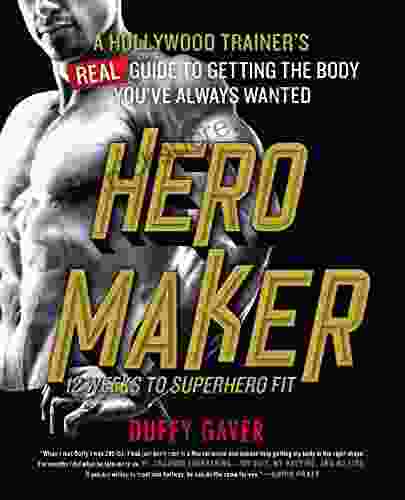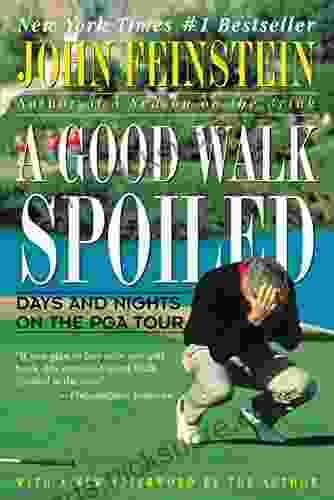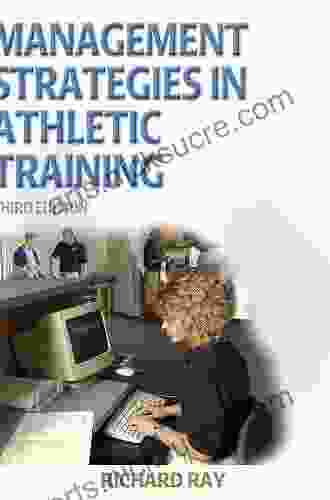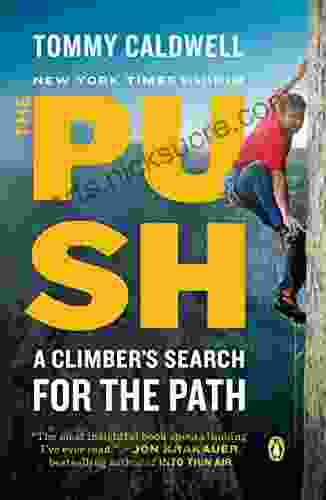Management Strategies In Athletic Training

Athletic training is a specialized field of healthcare that focuses on the prevention, diagnosis, treatment, and rehabilitation of injuries in athletes. Athletic trainers work with athletes of all ages and skill levels, from recreational athletes to professional athletes. They play a vital role in helping athletes stay healthy and perform at their best.
There are a variety of management strategies that athletic trainers can use to help athletes prevent and recover from injuries. These strategies include:
- Prevention: Athletic trainers can help athletes prevent injuries by teaching them proper warm-up and cool-down techniques, as well as how to avoid overtraining. They can also provide athletes with information on proper nutrition and hydration.
- Diagnosis: Athletic trainers can diagnose injuries by performing a physical examination and reviewing the athlete's medical history. They can also use imaging tests, such as X-rays and MRIs, to help confirm a diagnosis.
- Treatment: Athletic trainers can treat injuries using a variety of techniques, including rest, ice, compression, and elevation (RICE). They can also use electrical stimulation, ultrasound, and other modalities to help reduce pain and swelling.
- Rehabilitation: Athletic trainers can help athletes rehabilitate from injuries by designing and implementing individualized exercise programs. These programs help athletes regain range of motion, strength, and endurance.
- Education: Athletic trainers can educate athletes on a variety of topics, including injury prevention, nutrition, and hydration. They can also provide athletes with information on mental health and wellness.
Prevention
The best way to prevent injuries is to avoid them in the first place. Athletic trainers can help athletes prevent injuries by teaching them proper warm-up and cool-down techniques, as well as how to avoid overtraining. They can also provide athletes with information on proper nutrition and hydration.
4.6 out of 5
| Language | : | English |
| File size | : | 11416 KB |
| Text-to-Speech | : | Enabled |
| Screen Reader | : | Supported |
| Enhanced typesetting | : | Enabled |
| Print length | : | 367 pages |
| Lending | : | Enabled |
Warm-ups: Warming up before exercise helps to prepare the body for activity. Warm-ups should include exercises that gradually increase the heart rate and body temperature, as well as stretching exercises to increase flexibility.
Cool-downs: Cooling down after exercise helps to reduce the heart rate and body temperature, as well as to remove waste products from the muscles. Cool-downs should include exercises that gradually decrease the heart rate and body temperature, as well as stretching exercises to increase flexibility.
Avoiding overtraining: Overtraining can lead to a variety of injuries, including muscle strains, tendonitis, and stress fractures. Athletic trainers can help athletes avoid overtraining by working with them to develop a training plan that is appropriate for their fitness level and goals.
Nutrition: Eating a healthy diet helps to provide the body with the nutrients it needs to function properly. Athletic trainers can provide athletes with information on proper nutrition, including what foods to eat and how much to eat.
Hydration: Staying hydrated is essential for overall health and performance. Athletic trainers can provide athletes with information on proper hydration, including how much water to drink and when to drink it.
Diagnosis
Athletic trainers can diagnose injuries by performing a physical examination and reviewing the athlete's medical history. They can also use imaging tests, such as X-rays and MRIs, to help confirm a diagnosis.
Physical examination: A physical examination is a thorough examination of the body that can help to identify injuries. During a physical examination, the athletic trainer will look for signs of injury, such as swelling, bruising, and tenderness. They will also test the athlete's range of motion, strength, and endurance.
Medical history: The athlete's medical history can provide valuable information about potential injuries. Athletic trainers will ask athletes about their past injuries, surgeries, and any other medical conditions that they may have.
Imaging tests: Imaging tests, such as X-rays and MRIs, can help to confirm a diagnosis and provide more information about the extent of an injury.
Treatment
Athletic trainers can treat injuries using a variety of techniques, including rest, ice, compression, and elevation (RICE). They can also use electrical stimulation, ultrasound, and other modalities to help reduce pain and swelling.
RICE: RICE is a common treatment for acute injuries. RICE stands for rest, ice, compression, and elevation. Rest helps to reduce inflammation and pain. Ice helps to reduce swelling and pain. Compression helps to reduce swelling. Elevation helps to reduce swelling and pain.
Electrical stimulation: Electrical stimulation can help to reduce pain, swelling, and muscle spasms. It can also help to improve blood flow and promote healing.
Ultrasound: Ultrasound can help to reduce pain, swelling, and muscle spasms. It can also help to promote healing.
Rehabilitation
Athletic trainers can help athletes rehabilitate from injuries by designing and implementing individualized exercise programs. These programs help athletes regain range of motion, strength, and endurance.
Range of motion exercises: Range of motion exercises help to increase the range of motion of a joint. These exercises are important for restoring function after an injury.
Strengthening exercises: Strengthening exercises help to increase the strength of a muscle. These exercises are important for restoring function after an injury.
Endurance exercises: Endurance exercises help to increase the endurance of a muscle. These exercises are important for restoring function after an injury.
**Education ##
Athletic trainers can educate athletes on a variety of topics, including injury prevention, nutrition, and hydration. They can also provide athletes with information on mental health and wellness.
Injury prevention: Athletic trainers can provide athletes with information on how to prevent injuries. This information can include tips on proper warm-up and cool-down techniques, as well as how to avoid overtraining.
Nutrition: Athletic trainers can provide athletes with information on proper nutrition. This information can include tips on what foods to eat and how much to eat.
Hydration: Athletic trainers can provide athletes with information on proper hydration. This information can include tips on how much water to drink and when to drink it.
Mental health and wellness: Athletic trainers can provide athletes with information on mental health and wellness. This information can include tips on how to manage stress, anxiety, and depression.
Athletic trainers play a vital role in helping athletes stay healthy and perform at their best. They use a variety of management strategies to prevent, diagnose, treat, and rehabilitate injuries. By working with athletic trainers, athletes can improve their chances of staying healthy and injury-free.
4.6 out of 5
| Language | : | English |
| File size | : | 11416 KB |
| Text-to-Speech | : | Enabled |
| Screen Reader | : | Supported |
| Enhanced typesetting | : | Enabled |
| Print length | : | 367 pages |
| Lending | : | Enabled |
Do you want to contribute by writing guest posts on this blog?
Please contact us and send us a resume of previous articles that you have written.
 Fiction
Fiction Non Fiction
Non Fiction Romance
Romance Mystery
Mystery Thriller
Thriller SciFi
SciFi Fantasy
Fantasy Horror
Horror Biography
Biography Selfhelp
Selfhelp Business
Business History
History Classics
Classics Poetry
Poetry Childrens
Childrens Young Adult
Young Adult Educational
Educational Cooking
Cooking Travel
Travel Lifestyle
Lifestyle Spirituality
Spirituality Health
Health Fitness
Fitness Technology
Technology Science
Science Arts
Arts Crafts
Crafts DIY
DIY Gardening
Gardening Petcare
Petcare Tina L Quick
Tina L Quick Daniel Sobieck
Daniel Sobieck Christopher Pike
Christopher Pike Timothy Leffel
Timothy Leffel Alvin Boyd Kuhn
Alvin Boyd Kuhn Nicole Spindler
Nicole Spindler Mark Matlock
Mark Matlock Normandi Ellis
Normandi Ellis David Churchman
David Churchman Balazs Csigi
Balazs Csigi Larry Clay
Larry Clay James B Marsh
James B Marsh Lisa Mosconi
Lisa Mosconi Andrea Ros
Andrea Ros Adam Pertman
Adam Pertman Amby Cooper
Amby Cooper Max Porter
Max Porter Philip Striano
Philip Striano Helen Scheuerer
Helen Scheuerer Kevin J Cheek
Kevin J Cheek Karen Weekly
Karen Weekly Carmen Juncal
Carmen Juncal Joseph A Durlak
Joseph A Durlak Tony Grice
Tony Grice Paul Weamer
Paul Weamer Brad Borkan
Brad Borkan Staci Frenes
Staci Frenes Adelheid A M Nicol
Adelheid A M Nicol Heidi Dusek
Heidi Dusek Vedant J Maheshwari
Vedant J Maheshwari D J Conway
D J Conway Barry Brown
Barry Brown Master Sajid Ahmed
Master Sajid Ahmed Kevin Biggar
Kevin Biggar Bruce Hood
Bruce Hood Meghan Mccarthy Mcphaul
Meghan Mccarthy Mcphaul Lakshya Trivedi
Lakshya Trivedi Charles Dougherty
Charles Dougherty Jane M Healy
Jane M Healy Khalid Khashoggi
Khalid Khashoggi Afra J Zomorodian
Afra J Zomorodian Lori Bregman
Lori Bregman Mel Levine
Mel Levine Monique Boutsiv
Monique Boutsiv C S Pacat
C S Pacat George Sheehan
George Sheehan Adrian Bejan
Adrian Bejan Gerry Lopez
Gerry Lopez Leigh Bardugo
Leigh Bardugo Harper Paris
Harper Paris Amy Kovarick
Amy Kovarick Cynthia A Robertson
Cynthia A Robertson Ben Marcus
Ben Marcus Agnieszka Latocha
Agnieszka Latocha Jess Thomson
Jess Thomson Jacqueline Winspear
Jacqueline Winspear Heather Lende
Heather Lende Dagogo Altraide
Dagogo Altraide Libbi Palmer
Libbi Palmer Melvin Konner
Melvin Konner Kim Gosselin
Kim Gosselin Kara Powell
Kara Powell Bob Forsch
Bob Forsch John Muir
John Muir Gary Dean Quesenberry
Gary Dean Quesenberry Marty Ofonagoro
Marty Ofonagoro Ademar Aguiar
Ademar Aguiar Elizabeth De Zulueta
Elizabeth De Zulueta Deborah Grace White
Deborah Grace White Erin Eileen Leigh
Erin Eileen Leigh Duffy Gaver
Duffy Gaver Robert C Renneberg
Robert C Renneberg Adele Faber
Adele Faber Debra D Sullivan
Debra D Sullivan Max Mason
Max Mason Heather Worthington
Heather Worthington P Brian Noble
P Brian Noble Jd Richey
Jd Richey Adharanand Finn
Adharanand Finn Philip Gardiner
Philip Gardiner Sylvia Nasar
Sylvia Nasar Baby Professor
Baby Professor Sarah Stillman
Sarah Stillman Yuu Tanaka
Yuu Tanaka Sun Yung Shin
Sun Yung Shin Adrian Gonzales
Adrian Gonzales Saidiya V Hartman
Saidiya V Hartman Alexandra Horowitz
Alexandra Horowitz Jack Heinowitz
Jack Heinowitz Tom Ryan
Tom Ryan Andrea Huneeus Vergara
Andrea Huneeus Vergara Emily Larson
Emily Larson Dennis Cassinelli
Dennis Cassinelli Paul Embrechts
Paul Embrechts Annie Gilbert Coleman
Annie Gilbert Coleman Jennifer Justus
Jennifer Justus Malachi Martin
Malachi Martin Julie Mohan
Julie Mohan Lucy Wolfe
Lucy Wolfe Adam Serwer
Adam Serwer John Nero
John Nero Taylor Markarian
Taylor Markarian Leckie
Leckie Gene Hill
Gene Hill Kevin Van Whye
Kevin Van Whye Joseph Bruchac
Joseph Bruchac Michael D Rich
Michael D Rich Haym Kruglak
Haym Kruglak Anita Bean
Anita Bean Suzy Giordano
Suzy Giordano Dale F Bloom
Dale F Bloom Nomi Prins
Nomi Prins Fred Luskin
Fred Luskin Adam Stevenson
Adam Stevenson Emily Ross
Emily Ross Ed Hanczaryk
Ed Hanczaryk Marta Szabo
Marta Szabo Seth Berkman
Seth Berkman Michael Kerrisk
Michael Kerrisk E Lockhart
E Lockhart Afrodite Rossini
Afrodite Rossini Konstantinos Mylonas
Konstantinos Mylonas Ken Dehart
Ken Dehart Wendy Heard
Wendy Heard Heather D Yates
Heather D Yates Cameo Renae
Cameo Renae David A Whitsett
David A Whitsett Amy Racina
Amy Racina Marcus Heerdt
Marcus Heerdt Jacqueline Houtman
Jacqueline Houtman Thich Nhat Hanh
Thich Nhat Hanh Frank C Keil
Frank C Keil Pearl S Buck
Pearl S Buck James Mcdougall
James Mcdougall Adriana Rabinovich
Adriana Rabinovich Boy Scouts Of America
Boy Scouts Of America V C Andrews
V C Andrews Scott B Williams
Scott B Williams Philip Maffetone
Philip Maffetone Amy Bartelloni
Amy Bartelloni Adam Shoalts
Adam Shoalts Collins Easy Learning
Collins Easy Learning Dwayne Bryant
Dwayne Bryant Kamala Harris
Kamala Harris Rich Froning
Rich Froning Dr James Dinicolantonio
Dr James Dinicolantonio Ilene Skeen
Ilene Skeen Herb Carnegie
Herb Carnegie Tommy Caldwell
Tommy Caldwell Rachel Ormston
Rachel Ormston Amy Blakeslee
Amy Blakeslee Kathy A Zahler
Kathy A Zahler Adrian Li
Adrian Li Frank Delaney
Frank Delaney Supana Onikage
Supana Onikage Jay Mcgraw
Jay Mcgraw Harry Pearson
Harry Pearson Eliane Kurbegov
Eliane Kurbegov Natania Barron
Natania Barron Ari Marmell
Ari Marmell Julie Gore
Julie Gore Brian K Jones
Brian K Jones Suzanne Swedo
Suzanne Swedo Jason Browne
Jason Browne Joshua Baker
Joshua Baker Si Robertson
Si Robertson Greg Guest
Greg Guest Terri Paajanen
Terri Paajanen Basil Pickard
Basil Pickard Mary Ann Drummond
Mary Ann Drummond Adrienne Rawlinson
Adrienne Rawlinson Shelley Metten M S Ph D
Shelley Metten M S Ph D Andrew Beyer
Andrew Beyer Peter Shirley
Peter Shirley George Yule
George Yule Adrienne Engleman Pga Fellow Professional
Adrienne Engleman Pga Fellow Professional Frederick J Gravetter
Frederick J Gravetter Afsaneh Moradian
Afsaneh Moradian Alex Tremm
Alex Tremm Michele Angello
Michele Angello Adam Weymouth
Adam Weymouth Herbert Clyde Lewis
Herbert Clyde Lewis M Barlow Pepin
M Barlow Pepin Timothy Malcolm
Timothy Malcolm Team Golfwell
Team Golfwell George A Morgan
George A Morgan Agnes Light
Agnes Light William Smith
William Smith Shami Stovall
Shami Stovall Adrienne Mayor
Adrienne Mayor Kathryn Casey
Kathryn Casey Daniel Kahneman
Daniel Kahneman Paul Parker
Paul Parker Kosol Ouch
Kosol Ouch Jeff Hutton
Jeff Hutton David Sloan Wilson
David Sloan Wilson Kieran Higgins
Kieran Higgins Adrienne Tooley
Adrienne Tooley Brad Rock
Brad Rock Gregory Curtis
Gregory Curtis Gary Lonesborough
Gary Lonesborough Natalie Guenther
Natalie Guenther Frans X Plooij
Frans X Plooij Karen J Bun
Karen J Bun Eric Orton
Eric Orton Adrian Bardon
Adrian Bardon Robin Jones Gunn
Robin Jones Gunn Allie Duzett
Allie Duzett Joanne Jamrosz
Joanne Jamrosz Nastassja Martin
Nastassja Martin Sam Fadala
Sam Fadala Rusty Richards
Rusty Richards Melanie Mitchell
Melanie Mitchell J Lynn Bailey
J Lynn Bailey Aditya Chatterjee
Aditya Chatterjee Kirk Deeter
Kirk Deeter Ahmad Al Sukaini
Ahmad Al Sukaini Tim Hodkinson
Tim Hodkinson Rebecca Lowe
Rebecca Lowe Jo Deurbrouck
Jo Deurbrouck Agatha Christie
Agatha Christie Susy Lee
Susy Lee Chuck Mckeever
Chuck Mckeever Isabella Rotman
Isabella Rotman Letitia Baldrige
Letitia Baldrige Yusra Mardini
Yusra Mardini Angel Millar
Angel Millar Martin Dorey
Martin Dorey Timothy D Wilson
Timothy D Wilson Susannah Cahalan
Susannah Cahalan Adib Khorram
Adib Khorram Kate Wickers
Kate Wickers Douglas H Macdonald
Douglas H Macdonald Adam Rutherford Phd
Adam Rutherford Phd Adams Media
Adams Media Kendare Blake
Kendare Blake Jeff Van West
Jeff Van West Alisscia B
Alisscia B Avner Ash
Avner Ash Christina Shelley Albrecht
Christina Shelley Albrecht Ursula Goodenough
Ursula Goodenough Tony Herman
Tony Herman Shawn Thornton
Shawn Thornton Timothy Gowers
Timothy Gowers Paul L Wachtel
Paul L Wachtel Akilah Hughes
Akilah Hughes Ashley Bugge
Ashley Bugge Adele Westbrook
Adele Westbrook Hans Reichenbach
Hans Reichenbach S Yates
S Yates Stephen John Peel
Stephen John Peel James C Dobson
James C Dobson Melinda Folse
Melinda Folse Gianni Filippini
Gianni Filippini Barry Glassner
Barry Glassner Kevin Greene
Kevin Greene Susan Adams
Susan Adams Oscar Ratti
Oscar Ratti Gary R Miller
Gary R Miller Myatt Murphy
Myatt Murphy Alexandra Christo
Alexandra Christo Terrence W Deacon
Terrence W Deacon Zhongwen Fu
Zhongwen Fu Peter Marshall
Peter Marshall The Times Mind Games
The Times Mind Games Marta Alexander
Marta Alexander Carol Grbich
Carol Grbich Ron Elbe
Ron Elbe Adiba Jaigirdar
Adiba Jaigirdar Laura Fuentes
Laura Fuentes Carl Johan Calleman
Carl Johan Calleman Bonnie Raingruber
Bonnie Raingruber Luca Vargiu
Luca Vargiu Zachery Knowles
Zachery Knowles Mihaly Csikszentmihalyi
Mihaly Csikszentmihalyi C W Ceram
C W Ceram Bridget Bishop
Bridget Bishop David Blatner
David Blatner James P Lewis
James P Lewis Aenghus Chisholme
Aenghus Chisholme Renato Rosaldo
Renato Rosaldo Joe Varady
Joe Varady Todd Whitaker
Todd Whitaker John D Whidden
John D Whidden Loren Cordain
Loren Cordain Jeff Wallach
Jeff Wallach Marie Colvin
Marie Colvin Karl Sigmund
Karl Sigmund Thomas Pranio
Thomas Pranio Adam Woodbeck
Adam Woodbeck Archie Brain
Archie Brain Cindy Nana Parente
Cindy Nana Parente Michael Mcteigue
Michael Mcteigue Stephen Brennan
Stephen Brennan Alondra Nelson
Alondra Nelson John Passmore
John Passmore Moon Ho Jung
Moon Ho Jung Alvin E Roth
Alvin E Roth Leslie T Chang
Leslie T Chang Colin Pask
Colin Pask Johnathon Allen
Johnathon Allen Allen Hedrick
Allen Hedrick Eric Adelson
Eric Adelson Peter L Bernstein
Peter L Bernstein John D Mccann
John D Mccann Mildred Johnson
Mildred Johnson Adrian Wallwork
Adrian Wallwork Michael Bronski
Michael Bronski Dan Fagin
Dan Fagin Ayelet Fishbach
Ayelet Fishbach Adam Schupak
Adam Schupak Alex Aster
Alex Aster Walter Rhein
Walter Rhein Robert Stone
Robert Stone Julia V Taylor
Julia V Taylor Don Nehlen
Don Nehlen Elizabeth Parker
Elizabeth Parker Tessa Bielecki
Tessa Bielecki David Graeber
David Graeber Nicole Bailey
Nicole Bailey George Makari
George Makari Dr Paul Lam
Dr Paul Lam Slavka Bodic
Slavka Bodic Robin L Rielly
Robin L Rielly Adam Shaw
Adam Shaw Jasmine Taylor
Jasmine Taylor Adele Jones
Adele Jones Christy Isbell
Christy Isbell Dirk Baker
Dirk Baker Adam Ploszaj
Adam Ploszaj Mick Dolan
Mick Dolan Craig Wiggers
Craig Wiggers Edgar Giffenig
Edgar Giffenig Gena Showalter
Gena Showalter Gerry Giovinco
Gerry Giovinco Michael S Weisbach
Michael S Weisbach Mona Liza Santos
Mona Liza Santos Mark Cucuzzella
Mark Cucuzzella Michael Brooks
Michael Brooks Jenna Parker
Jenna Parker Katarzyna Wac
Katarzyna Wac Nancy Mellon
Nancy Mellon Helen Xander
Helen Xander Seymour Lipschutz
Seymour Lipschutz Shmuel Goldberg
Shmuel Goldberg Charles R Swindoll
Charles R Swindoll Michael H Lubetsky
Michael H Lubetsky Tim Wise
Tim Wise C K Murray
C K Murray Aftab Hamid
Aftab Hamid Sherrie Nist Olejnik
Sherrie Nist Olejnik Ken Robinson
Ken Robinson Amelia Simmons
Amelia Simmons Alicia Young
Alicia Young Jordan Bone
Jordan Bone Kirsten Watson
Kirsten Watson Jorge Luis Delgado
Jorge Luis Delgado Elizabeth Carman
Elizabeth Carman Pete Jordan
Pete Jordan Susan Garcia
Susan Garcia Meganne Forbes
Meganne Forbes Adrian Lobley
Adrian Lobley Mayuri Saxena
Mayuri Saxena Dorothy Hamill
Dorothy Hamill Claire Heffron
Claire Heffron Ahmed Hulusi
Ahmed Hulusi Barbara Mertz
Barbara Mertz David Mcraney
David Mcraney Matt Morton
Matt Morton Robin Suerig Holleran
Robin Suerig Holleran Peggy Tharpe
Peggy Tharpe Bobbie Ziemer
Bobbie Ziemer John North
John North Elias Johnson
Elias Johnson Valerie Melvin
Valerie Melvin American Alpine Club
American Alpine Club Anita Shreve
Anita Shreve Jose Antonio Fernandez
Jose Antonio Fernandez Ae Marling
Ae Marling Michelle Reid
Michelle Reid Adam Raider
Adam Raider Susan Rovezzi Carroll
Susan Rovezzi Carroll Joanna Warrington
Joanna Warrington Warwick Rodwell
Warwick Rodwell Scott O Dell
Scott O Dell Rod Heckelman
Rod Heckelman Michael J Domitrz
Michael J Domitrz James Lovelock
James Lovelock Brian J Lang
Brian J Lang Kenneth Martz
Kenneth Martz Mike Jacker
Mike Jacker Fergus Connolly
Fergus Connolly Veronica Strang
Veronica Strang Marc Roche
Marc Roche Adrian Wilson
Adrian Wilson Christina Cimorelli
Christina Cimorelli Max Jammer
Max Jammer Mickey Royal
Mickey Royal Richard J Larsen
Richard J Larsen Andres Mooring
Andres Mooring Danny Wuerffel
Danny Wuerffel Peter Wayne
Peter Wayne Timothy J Baroni
Timothy J Baroni Adrian Smith
Adrian Smith Don Webb
Don Webb Spike Walker
Spike Walker Trevor Rowley
Trevor Rowley Simon Needham
Simon Needham Doris J Barnes
Doris J Barnes John Feinstein
John Feinstein Lily Luchesi
Lily Luchesi Marissa Anderson
Marissa Anderson Wayne Curtis
Wayne Curtis John Vaillant
John Vaillant Issendai Bechau
Issendai Bechau Liao Yiwu
Liao Yiwu Bettina Elias Siegel
Bettina Elias Siegel Lydia Kang
Lydia Kang Greg Wyshynski
Greg Wyshynski Louisa J Morgan
Louisa J Morgan Lynne Kelly
Lynne Kelly Joe Harkness
Joe Harkness Noah Michaud
Noah Michaud John Shelton Reed
John Shelton Reed Jeff Wiltse
Jeff Wiltse Mark Bittman
Mark Bittman Elias M Stein
Elias M Stein Zoe Clark Coates
Zoe Clark Coates Herbert L Roitblat
Herbert L Roitblat Doki Cohen
Doki Cohen Meg Cox
Meg Cox Gina Fava
Gina Fava Hannes Wessels
Hannes Wessels Jenny Jones
Jenny Jones Rick Sapp
Rick Sapp Noson S Yanofsky
Noson S Yanofsky Alexi Pappas
Alexi Pappas Adrienne Young
Adrienne Young Jonathan Kozol
Jonathan Kozol Linus Wilson
Linus Wilson Steve Mchugh
Steve Mchugh James Goi Jr
James Goi Jr Joan Naidorf
Joan Naidorf Sergei Urban
Sergei Urban Mary Roach
Mary Roach Nicholas Kardaras
Nicholas Kardaras Bryan Willis
Bryan Willis Nicholas Carr
Nicholas Carr Bruce Rosenfeld
Bruce Rosenfeld John Hillman
John Hillman Lindsay Burton
Lindsay Burton Phil Cousineau
Phil Cousineau Aubre Tompkins Cnm
Aubre Tompkins Cnm John Graves
John Graves Zainab Yate
Zainab Yate Kathy Toney
Kathy Toney Barry Melrose
Barry Melrose John Martin Taylor
John Martin Taylor Joe Posnanski
Joe Posnanski Mariel Hemingway
Mariel Hemingway Adrian Wells
Adrian Wells Jake Schafft
Jake Schafft Robyn Wideman
Robyn Wideman Ken Jeremiah
Ken Jeremiah Joseph Pred
Joseph Pred Nelson L Schuman
Nelson L Schuman Brittany Konsella
Brittany Konsella Darron L Clark
Darron L Clark Sarah Clarkson
Sarah Clarkson Sam L Savage
Sam L Savage Maurice Isserman
Maurice Isserman Eric Hoffer
Eric Hoffer Asrai Devin
Asrai Devin Darrell Huff
Darrell Huff Adrian May
Adrian May Richard Ray
Richard Ray Trisha Yearwood
Trisha Yearwood Thomas E Gilson
Thomas E Gilson Charles D Amico
Charles D Amico Stephen Tignor
Stephen Tignor Patrick Hutchinson
Patrick Hutchinson Laura Zinn Fromm
Laura Zinn Fromm
Light bulbAdvertise smarter! Our strategic ad space ensures maximum exposure. Reserve your spot today!
 Colin FosterFollow ·12.4k
Colin FosterFollow ·12.4k Avery SimmonsFollow ·13.8k
Avery SimmonsFollow ·13.8k Chadwick PowellFollow ·15.1k
Chadwick PowellFollow ·15.1k Edmund HayesFollow ·12.9k
Edmund HayesFollow ·12.9k Connor MitchellFollow ·5.7k
Connor MitchellFollow ·5.7k Ralph Waldo EmersonFollow ·16.1k
Ralph Waldo EmersonFollow ·16.1k Edgar HayesFollow ·8.2k
Edgar HayesFollow ·8.2k Jonathan HayesFollow ·9k
Jonathan HayesFollow ·9k
 Cruz Simmons
Cruz SimmonsThe Ultimate Canadian Cookbook: A Culinary Exploration of...
Journey into the heart of Canadian cuisine...

 Grayson Bell
Grayson BellAn Initial Exploration Of The Diminishing Role Of Facts...
When we think of the digital age, we often...

 Jayden Cox
Jayden CoxHollywood Trainer's Real Guide to Getting the Body You've...
Achieving a fit and...

 Octavio Paz
Octavio PazGood Walk Spoiled: An Exploration of the Effects of...
Dogs are often hailed...

 Jerome Powell
Jerome PowellMuhammad Allah Ahmed Hulusi: A Visionary Scholar and...
Muhammad Allah Ahmed Hulusi...
4.6 out of 5
| Language | : | English |
| File size | : | 11416 KB |
| Text-to-Speech | : | Enabled |
| Screen Reader | : | Supported |
| Enhanced typesetting | : | Enabled |
| Print length | : | 367 pages |
| Lending | : | Enabled |













